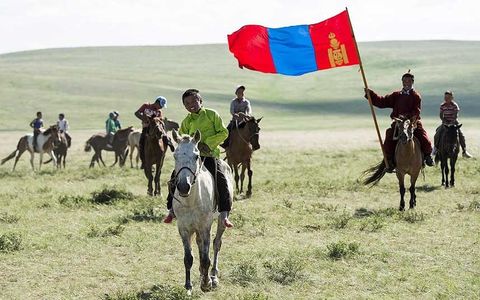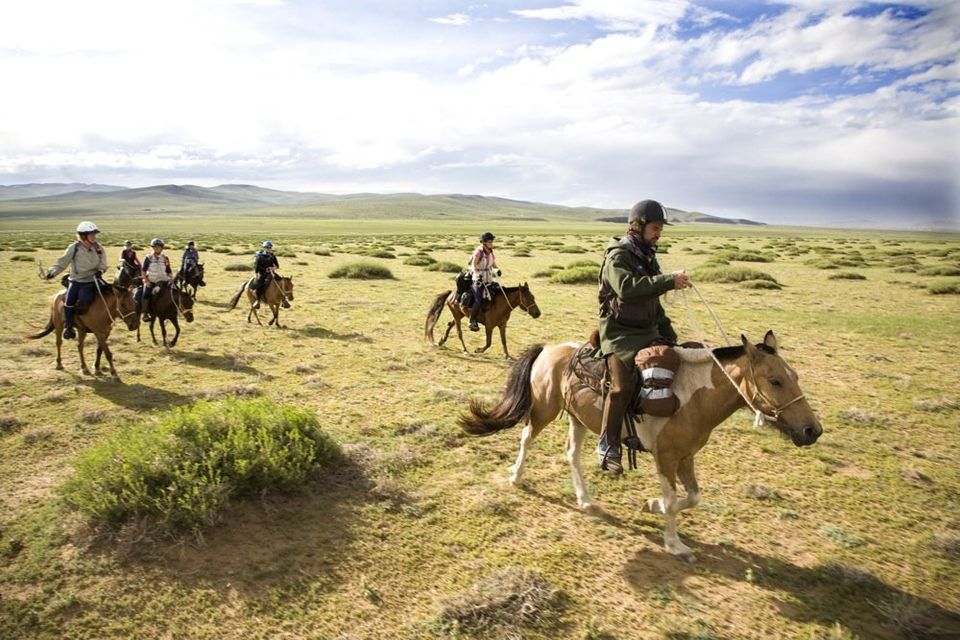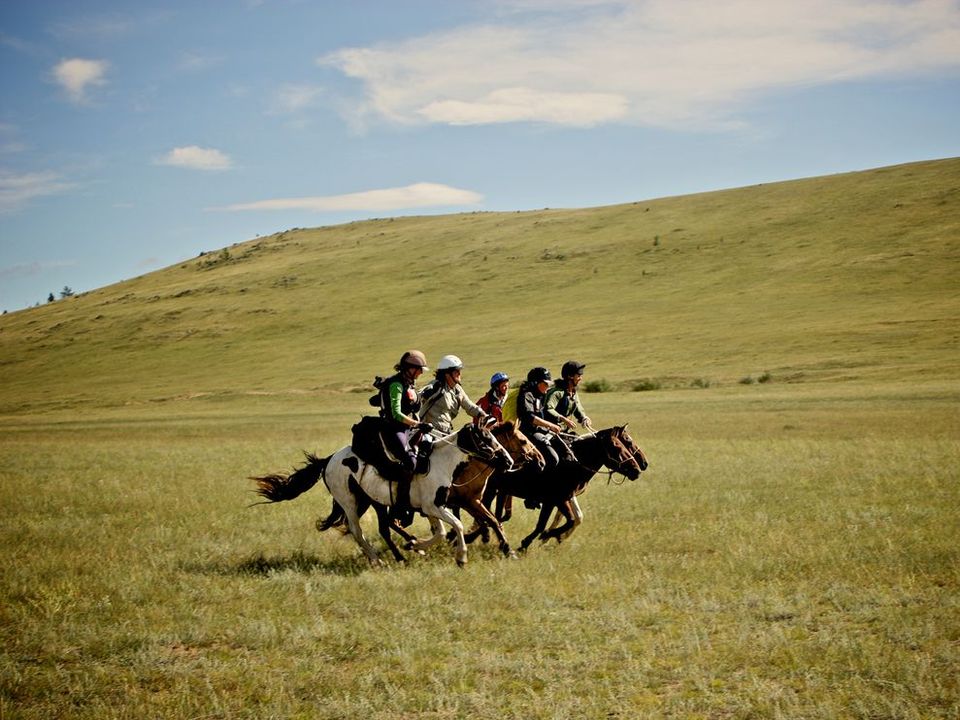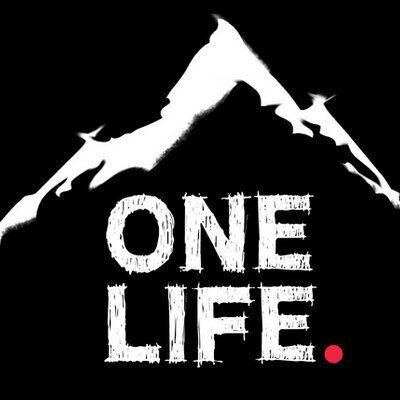The Mongol Derby
“Behold the Derby. 1000km of steppe, powered by 400kgs of horse, inspired by 800 years of history…” – The Adventurists
Who are you
Katy Willings event organiser
The Challenge
The Mongol Derby
How long did it take
10 days
What was the distance
1000kms
How much did it cost
$9800, plus flight to UB and kit
Who was the organiser

What was it like
The Mongol Derby is a 1000 km horse race based on the postal system of Chinggis Khaan, which could relay messages thousands of miles in a matter of days. Like the ancient postal system the Mongol Derby relies on a network of horse stations. These are stationed at a maximum of 40 kilometre intervals stretching along the course. With the riders changing steed at each horse station, the Derby is not a test of the horses’ speed, but of the rider’s skill, navigation ability and endurance. Riders sleep under the stars or stay with nomadic herding families, navigate independently over an unmarked course, and select each remount at the horse stations, adding an enormous tactical element to the Derby beyond simply riding at speed.
I was in India, participating in another of the Adventurists’ events, the Rickshaw Run, when the Mongol Derby was unveiled. Having just rolled my rickshaw after a poorly-judged mountain hairpin and crashed into a oncoming truck, before hacking the roof off and driving on to the finish, I was feeling a little bit bulletproof, and casually stated that I could and would ride the Derby, which was being touted as the toughest equine event ever conceived. As a lifelong rider and mediocre amateur athlete – cyclosportives, triathlons, 10ks and half marathons; standard city-girl pastimes – the mounted and endurance elements held limited pant-wetting power over me. Badminton or Aintree this was not. It was the survival element, the isolation, the self-sufficiency, the startling opportunity to get very, very lost which alternately thrilled and horrified me. And it was the country’s extraordinary history and geography which ultimately seduced me; home of the largest land empire ever created under Chinggis Khaan, who also codified lots of interesting points of international law like diplomatic immunity; sunniest country on earth; 2nd most sparsely populated country (after Greenland) on earth; one of the very last remaining nomadic cultures; seven horses per head of population; a land of shamans, eagle-hunters, but above all, horsemen. I was sure I’d learn something, and curious also to see if I could teach the horses a few tricks in return.
Mongolian horses- a leg in each corner, plus a spare…
The horses are the stars of the show. The Derby team round up close to 1000 horses to take part, in a dizzying logistical exercise. I remember clearly the feeling that it all seemed to have happened by magic- riding over the horizon to see a couple of gers and a line of 30 horses, at 40km intervals, for 1000kms. With no phone signal! To call it magic is to short-change the hundreds of Mongolian owners, breeders and horsemen, and the local governors who work with the Adventurists to source and select the horses, train them and deliver them to the morin urtuus (horse stations) at the allotted time, where they are vetted one last time before the off.
The horses, for their part, are brilliant. Surefooted, opinionated, wild, indomitable, and frequently indefatigable. They carried me safely across terrain which I would have struggled to walk, never mind run across; a memorable flood plain which looked like a field of fluorescent green moguls, about a foot high and set six inches apart, which i took at a full gallop on a very cocky and nonchalant horse; across rivers, through forests, and of course mile after mile of thyme-scented rolling steppe. Even this innocuous going has its hazards, being peppered with marmot holes which would easily break a leg if the horses were not so spectacularly well-adjusted to their environment. They always found an extra leg, and worked constantly to read the ground and look after themselves, and their riders, as long as you stayed on. They were also more sensitive than I expected, and the principles of good riding very definitely applied.
How wild is ‘semi-wild’?
My reading of the Mongol Derby website when I entered the race had made me suspicious of the term ‘semi-wild’ to describe the horses. Was this just hyperbole to impress a non-horsey public? “These people are so crazy they are on Wild Horses!” Actually, it’s a fair description; they are wild, with a healthy suspicion of people and outside influence. Their main agenda is just being horses, in their herds, eating, living, dying, mating, playing, fighting, asserting themselves. Wading the horses into rivers for a drink, we would frequently share the water with 30 or 40 horses of all shapes, ages, sizes and colours, in a glorious natural state. I wondered if they were relatives of my steed, where he might fit in with the herd, and whether he would be back out with them by darkfall. The horses belong to the herders, a symbol of their wealth and status, and the horsemen constantly round them up to maintain the herd’s integrity using a lasso on the end of a pole. Their dexterity is astonishing, as is the horses’ lack of fear and and fuss at being herded.
How fast is fast? How tough is tough?
1000kms is a long way. I had never measured either my speed or my distance when in the saddle, so I enlisted a bit of help from endurance guru Maggie Pattinson in the run-up to give me some pointers, and this proved to be time very well spent. Endurance riders have a natural advantage on the rest of the field, as they are familiar with how to conserve their own and their horses’ energy, and also how to present the horses to the vets at the end of the leg. If you have never measured your horse’s heart rate, how do you know what effort level corresponds with what heart rate? It has definitely been first blood to the endurance riders, with South African Charles van Wyk and American Justin Nelzen taking the title in 2009 and 2010 respectively. Maggie’s advice to me had been to cover the distance at a consistent clip, in whichever pace the horse indicated it preferred. Some were incredible trotters, some preferred canter. I varied between rising trot, with regular changes of diagonal, and sitting, and tried to work the horse evenly on both legs in canter.

Plenty of horses liked to fire out of the gate like they had been shot, and took some persuading that this was not a good idea with 40kms to tackle. Others liked to have a good sulk at the prospect of leaving their mates behind, and required a bit of galvanising until they were over the brow of a hill and away. I covered some legs averaging 15kph on horses that could have done the whole 1000kms without blowing out a candle. Other legs, in gale force winds, lashing rain or baking heat, on lazier or less fit horses, or where I navigated badly, were more challenging. It all added to the flavour.
In truth my speed was constrained by the horses very rarely; it was much more likely that I would be held up by other factors. I was a pretty amateur camper and would definitely not have won prizes for my de-camping protocol of a morning. The need to empty entire saddle bags to check that certain vital bits of equipment had not been lost was a hindrance. Unzipping my coffin-sized tent of a morning to discover my horse had hopped off overnight, despite having three of its legs tied together and being tied on a lunge line, lost me an hour or two.
Running repairs to reins, girth, sunglasses, team-mates and thighs all required time, tools and daylight. Coming across a beautiful stretch of river during a swift leg in blazing sunshine, and four days without a wash, I could not resist a swim, and squandered a good deal of time with my horse hobbled on the bank, splashing about with some local children. Waking up with a bit of a hangover after a night spent with the nomads, singing songs, sharing a fire, offering toasts of vodka to the wind, the earth, the sky, the horses, everything else we could think of, probably slowed me down on a few days too. Mongolians adore singing, drinking and horses, and for these reasons I had no difficulty in going native. My adopted Mongolian father bought me a beautiful deel, the national dress, which I proudly wore for my final day in the saddle, crossing the line like a cavalry charge in a biblical storm with people who will be friends for life.

How did you train
I trained for time in the saddle, primarily, and endurance and exposure, secondarily. I would say these are the correct priorities. A lifelong rider would attain enough riding fitness with relative ease, but would definitely need to work on the endurance aspect of being hard at it, all day, every day. Conversely, a good athlete with less riding experience would need to focus on horsemanship and core strength and stability. Being able to look after the horses is of paramount importance. So is being a balanced and educated rider, rather than a lump of tentative dead weight! I was working full time in a London consulting job but was lucky to have plenty of access to riding at the weekends, and once or twice in the week. Around that, I was in the gym 3 or 4 times, and running or cycling between work, home, different yards. I tried to do all of my endurance training outside, in the heat of the day, to replicate the exposure and dehydration aspects and prepare for them. I worked with Bruno Pirez Vaz at GymBox in Covent Garden, who was a total gem- tough but inspiring!
Any other useful hints / links
Prepare a few sing-songs! The Mongolians are amazing hosts and it’s a pleasure to share food and fire with them of an evening. They love to sing (mostly about horses), and are absolutely delighted when their guests honour them with a song in return. Don’t be shy!
Travel light- any weight on the horse will slow you down, so be as light as you can (within reason, don’t starve!). If you wouldn’t want to carry something 1000kms yourself, think hard before attaching it to the horse. Clean kit won’t be clean after a couple of days stowed in a saddle bag on a sweaty, hairy flank! Sunscreen and lip balm essential, and decent sunglasses as the light is so strong. Proper pants with no seams, and maybe even some padding. You only get one butt.
Main advice is go with the flow- you might have an absolute blinder and be very competitive upfront, but you might take a tumble, waste half a day looking for your horse and end up bringing up the rear. Either way it’s a ridiculously enjoyable experience.
Event website- see http://mongolderby.theadventurists.com/
View More Articles
Services List
-
Land This is a text area. Writing in paragraphs lets your visitor find what they are looking for quickly and easily. Edit the text in the list editor.
Land -
Water Expeditions This is a text area. Writing in paragraphs lets your visitor find what they are looking for quickly and easily. Edit the text in the list editor.
Water Expeditions -
Ice Expeditions This is a text area. Writing in paragraphs lets your visitor find what they are looking for quickly and easily. Edit the text in the list editor.
Ice Expeditions
